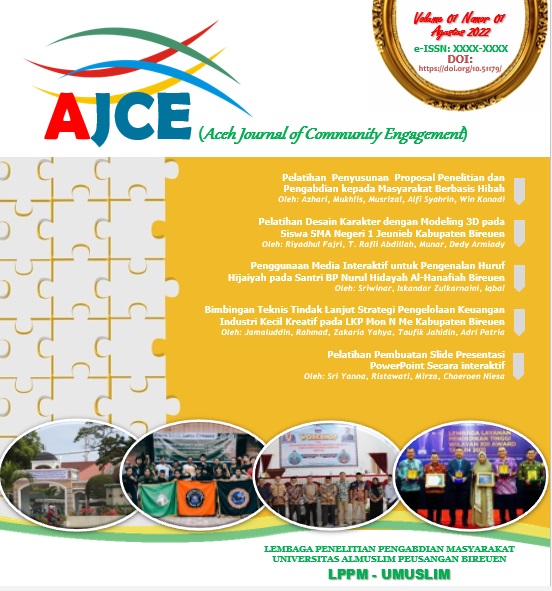Pelatihan Desain Karakter dengan Modeling 3D Kepada Siswa SMA Negeri 1 Jeunieb Kabupaten Bireuen
DOI:
https://doi.org/10.51179/ajce.v1i1.1398Kata Kunci:
Animation, Character, Intellectual Property, Blender, DesignAbstrak
Indonesia has a source of inspiration in character creation because it has a unique and diverse culture. Of course, in the creation of characters extracted from cultural sources, the Indonesian nation has enormous potential. Character development can start from comics, games, novels or movies. Then it can be reduced to merchandise, 2D/3D movies, mobile games, consoles, board
games. In an animated film, human or animal characters are one of the most important elements. Character is a filler role from the story of an animated film. It is even now an advantage that characters in animated films can be registered as Intellectual Property. The Intellectual Property of the characters and their derivatives may be commercialized. The purpose of the 3D character design training is to train the participants (students) ability to create animated characters so that they can compete nationally and even internationally. This 3D Character Design was created using Blender, a free opensource software. In this
training, participants are also given knowledge about 3D character topology modeling so that it is easy to animate. Because character design depends on its purpose whether it's just a model for concept art or an object model to animate
Unduhan
Unduhan
Diterbitkan
Cara Mengutip
Terbitan
Bagian
Lisensi
Hak Cipta (c) 2022 Aceh Journal of Community Engagement (AJCE)

Artikel ini berlisensiCreative Commons Attribution-ShareAlike 4.0 International License.












